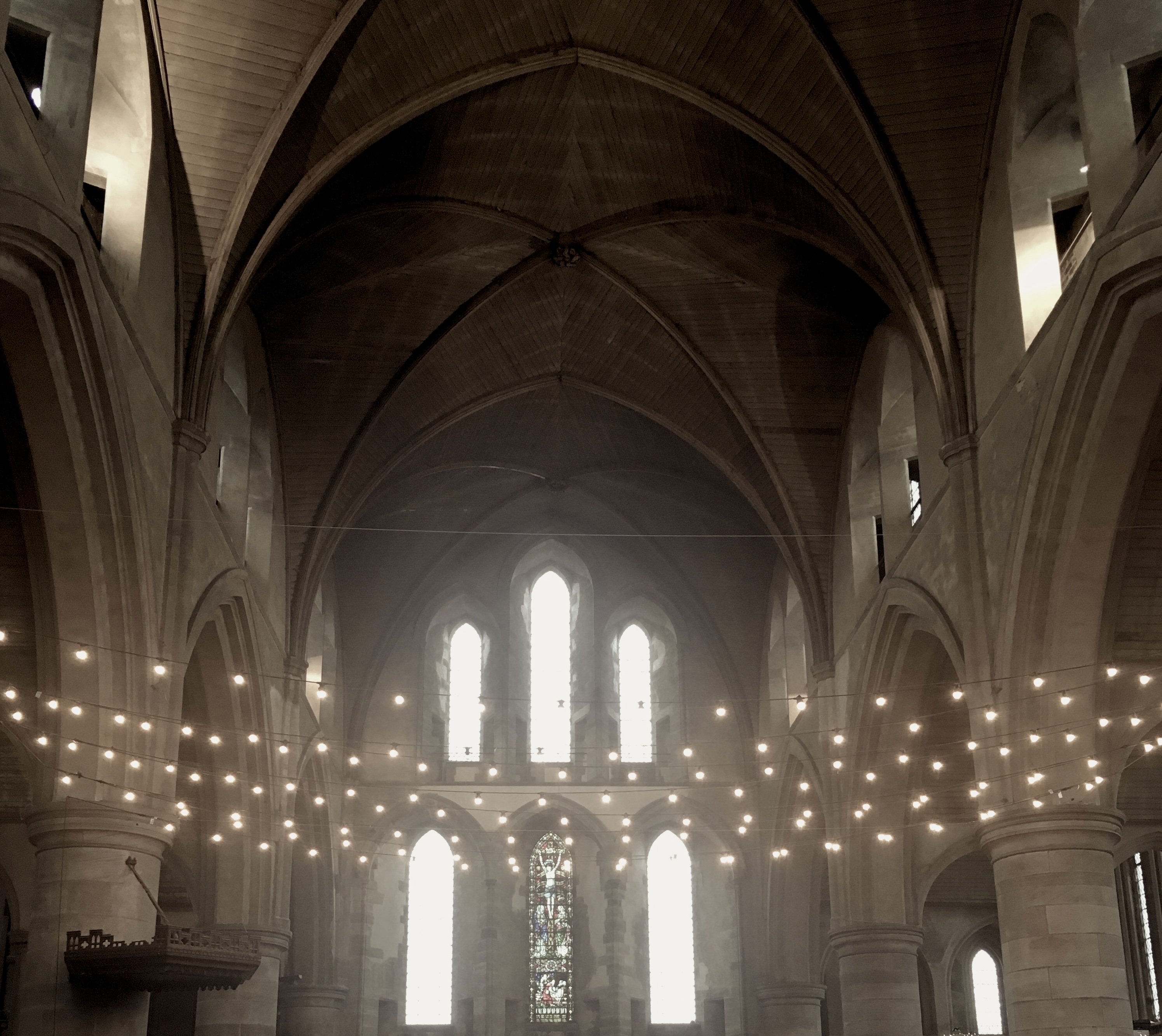Spotlight: Left Bank Leeds
Amber Shaw is a fourth-year undergraduate student in the School of Philosophy, Religion and History of Science at the University of Leeds. Her degree focus is Theology & Religious Studies and as part of her final year project, decided to undertake an external placement at Left Bank Leeds, researching the motivations of visitors and the impact of the building. For this Spotlight piece, Amber interviews Mike Love - Trustee of Left Bank Leeds - on the history of the building, its mission and his passion for the project.
Mike Love was so inspired by the St Margret of Antioch Church that when the building became unused in 1995, he and a group of residents founded a charity in order to purchase the building. In 2002 they bought the building and after years of fundraising and repair works, the building opened for its first event - a wedding reception in 2007. Since these humble beginnings, Left Bank Leeds has gone from strength to strength, with an immensely varied events programme and a constantly changing art gallery located in the porch. I have been lucky enough to work with Left Bank Leeds, conducting research in order to discover the motivations people have for attending events, and if the building itself plays any part in this.
Mike Love’s relationship with the building extends far beyond the creation of Left Bank Leeds as we know it today. It was in 1978 that the building first made its lasting impression on him. So much so that whilst on holiday in France, Mike describes taking photographs of architecture and design that he believed would fit into the Left Bank Leeds building. Mike had a strong sense that the building would one day be under his care, that “God would give the building to us”. It was very important to him that the building should reflect what the public would like to see and after being approached by many local artists, he realised that perhaps the best use for the building would be as an arts space. Now, as a trustee of Left Bank Leeds, he is able to implement his vision, and alongside a talented team of individuals, he works to ensure that Left Bank Leeds is continuously producing events that are relevant and innovative to the public.
The Left Bank Building
St Margret of Antioch church was built in 1906 after many years of fundraising and the use of a temporary iron building. Members of the public would collect door-to-door donations or offered people a smaller subscription service for those who could not afford to give large amounts at one time. Mike discusses the importance of the contrast between the architecture of Left Bank Leeds and that of the surrounding houses, which would be the homes of the public who funded the church. The public in 1906 were  predominantly working class who had very little disposable income, they lived in small cheaply built houses and yet still managed to raise the funds for such an impressive church building. This highlights the strength of the community spirit and the immense value they placed on having a space that belonged to the community. The building as a space that belonged to the public, even after its life as a Christian church, was central to Mike’s vision. His idea that the church was created “by the people, for the people” is perhaps his main motivation for making an accessible space that people of any or in fact no faith can enjoy.
predominantly working class who had very little disposable income, they lived in small cheaply built houses and yet still managed to raise the funds for such an impressive church building. This highlights the strength of the community spirit and the immense value they placed on having a space that belonged to the community. The building as a space that belonged to the public, even after its life as a Christian church, was central to Mike’s vision. His idea that the church was created “by the people, for the people” is perhaps his main motivation for making an accessible space that people of any or in fact no faith can enjoy.
What role does religion play?
When asked what role religion plays today with Left Bank Leeds, Mike described it as having “hints of God running through it, like a thread in a beautiful tapestry you can’t always see it and yet if it was to be removed it would lose its magic”. This can be seen throughout the varied events on offer, some are more overtly ‘religious’, such as ‘Beer and Carols’, whereas events such as opening nights for the ‘Art in the Porch’ gallery appear less religiously motivated. ‘Wellbeing, connection and creativity’ is the charity’s mission statement and Mike highlights that these can all be viewed as spiritual values, and that Left Bank Leeds itself can “help people rethink their faith and see beyond the church”.
Christian churches in Leeds are in decline and so, and as Mike puts it “it cannot just be business as normal”. Left Bank is a new way in which faith can interact with other faiths and the secular, while still keeping hold of its own identity. Mike puts forward the view that “Left Bank is an experiment in how people of a Christian faith work that out in the city. It could be a prototype”. However, Mike believes that many Christians would not regard Left Bank Leeds as Christian, meaning that the boundaries on what the word Christianity means can change and transform. I am unsure of whether Left Bank Leeds actively promotes religion in public life, but religion can definitely be found here if you are looking to experience it.
By Amber Shaw
Image Credit: Amber Shaw
